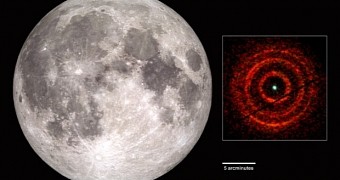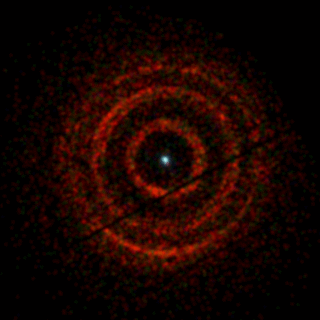A new space image obtained with the help of NASA's Swift satellite appears to show a cosmic bull's-eye of sorts. The image, available next to this article, was produced about a week and a half ago.
This view of what seems to be a collection of nested rings in deep space is the work of a team of astronomers led by University of Leicester scientist Andrew Beardmore.
When studied with the help of NASA's Swift satellite on June 30, the odd-looking bull's-eye covered a patch of sky about half the size of the Moon.
Before you start thinking that aliens must exist and be quite passionate about playing darts, you should know that the image shows not a cosmic shooting target but rings of X-ray light neatly arranged around an erupting black hole.
“What looks like a shooting target is actually an image of nested rings of X-ray light centered on an erupting black hole,” University of Leicester astronomer Andrew Beardmore and colleagues explain.
The black hole in question is located at a distance of about 8,000 light-years from us. Together with a star about the size of our Sun, it forms a system known to the scientific community as V404 Cygni.
How a black hole can create a bull's-eye
Astronomers say that, on June 26, at 1:40 p.m. EDT, the black hole that is part of the V404 Cygni system threw a fit and produced a massive flare, emitting X-rays in all possible directions.
While traveling through space, some of these X-rays birthed by the June 26 flare were reflected back to us by dust layers that they encountered along their way.
So, basically, these gorgeous red rings imaged by NASA's Swift satellite are the end result of an echo effect of X-rays reflected back to us by cosmic dust surrounding the V404 Cygni system.
“Dust layers reflect some of these X-rays back to us, but the light travels a longer distance and reaches us slightly later than light traveling a more direct path.”
“The time delay creates the light echo, forming rings that expand with time,” study leader Andrew Beardmore and his team explain the birth of this shooting target in deep space.
The black hole that created the light display is known to fire up and release massive flares about once every couple of decades. The last time it put on such a show was in the 1980s.

 14 DAY TRIAL //
14 DAY TRIAL // 

